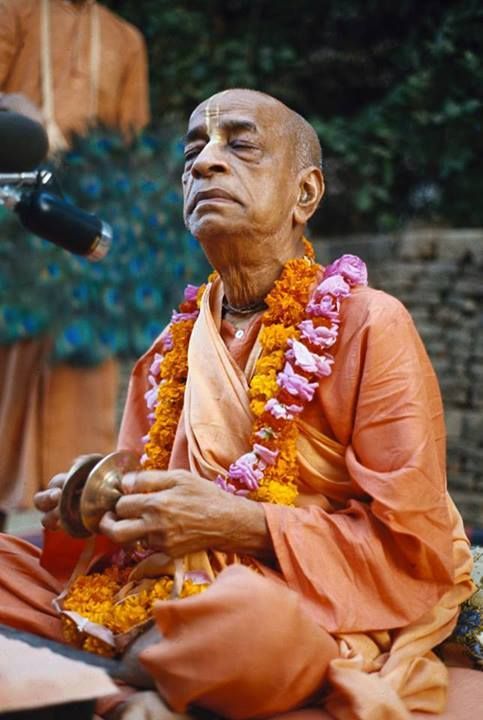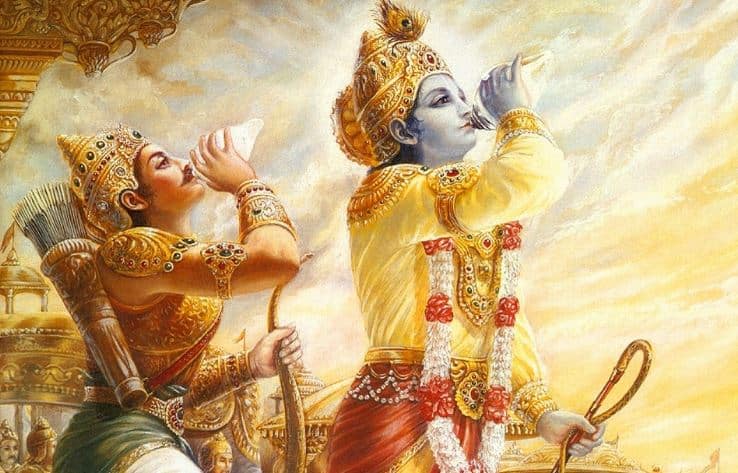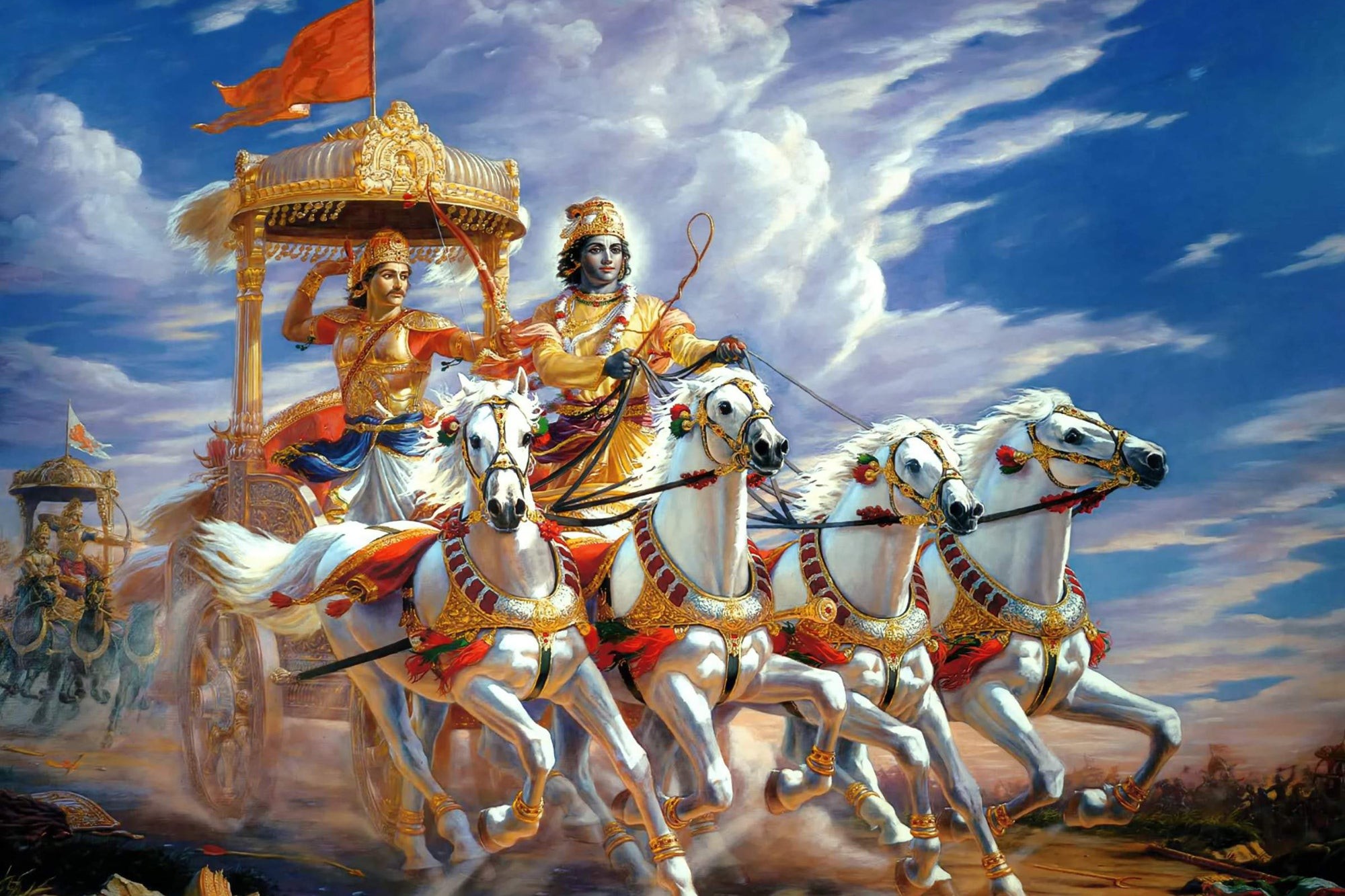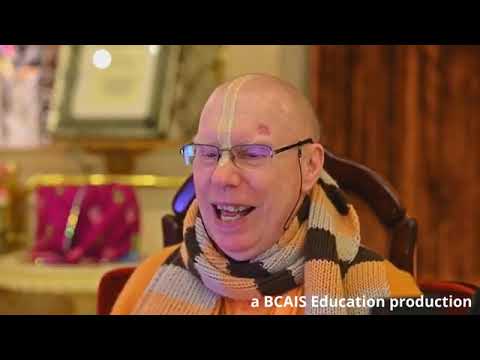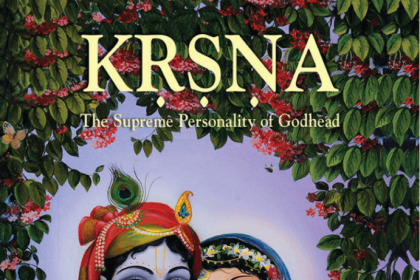TEXT 5
yat sāṅkhyaiḥ prāpyate sthānaṁ
tad yogair api gamyate
ekaṁ sāṅkhyaṁ ca yogaṁ ca
yaḥ paśyati sa paśyati
SYNONYMS
yat—what; sāṅkhyaiḥ—by means of Sāṅkhya philosophy; prāpyate—is achieved; sthānam—place; tat—that; yogaiḥ—by devotional service; api—also; gamyate—one can attain; ekam—one; sāṅkhyam—analytical study; ca—and; yogam—action in devotion; ca—and; yaḥ—one who; paśyati—sees; saḥ—he; paśyati—actually sees.
TRANSLATION
One who knows that the position reached by means of analytical study can also be attained by devotional service, and who therefore sees analytical study and devotional service to be on the same level, sees things as they are.
PURPORT
The real purpose of philosophical research is to find the ultimate goal of life. Since the ultimate goal of life is self-realization, there is no difference between the conclusions reached by the two processes. By Sāṅkhya philosophical research one comes to the conclusion that a living entity is not a part and parcel of the material world but of the supreme spirit whole. Consequently, the spirit soul has nothing to do with the material world; his actions must be in some relation with the Supreme. When he acts in Kṛṣṇa consciousness, he is actually in his constitutional position. In the first process, Sāṅkhya, one has to become detached from matter, and in the devotional yoga process one has to attach himself to the work of Kṛṣṇa consciousness. Factually, both processes are the same, although superficially one process appears to involve detachment and the other process appears to involve attachment. Detachment from matter and attachment to Kṛṣṇa are one and the same. One who can see this sees things as they are.
TEXT 6
sannyāsas tu mahā-bāho
duḥkham āptum ayogataḥ
yoga-yukto munir brahma
na cireṇādhigacchati
SYNONYMS
sannyāsaḥ—the renounced order of life; tu—but; mahā-bāho—O mighty-armed one; duḥkham—distress; āptum—afflicts one with; ayogataḥ—without devotional service; yoga-yuktaḥ—one engaged in devotional service; muniḥ—a thinker; brahma—the Supreme; na cireṇa—without delay; adhigacchati—attains.
TRANSLATION
Merely renouncing all activities yet not engaging in the devotional service of the Lord cannot make one happy. But a thoughtful person engaged in devotional service can achieve the Supreme without delay.
PURPORT
There are two classes of sannyāsīs, or persons in the renounced order of life. The Māyāvādī sannyāsīs are engaged in the study of Sāṅkhya philosophy, whereas the Vaiṣṇava sannyāsīs are engaged in the study of Bhāgavatam philosophy, which affords the proper commentary on the Vedānta-sūtras. The Māyāvādī sannyāsīs also study the Vedānta-sūtras, but use their own commentary, called Śārīraka-bhāṣya, written by Śaṅkarācārya. The students of the Bhāgavata school are engaged in the devotional service of the Lord, according to pāñcarātrikī regulations, and therefore the Vaiṣṇava sannyāsīs have multiple engagements in the transcendental service of the Lord. The Vaiṣṇava sannyāsīs have nothing to do with material activities, and yet they perform various activities in their devotional service to the Lord. But the Māyāvādī sannyāsīs, engaged in the studies of Sāṅkhya and Vedānta and speculation, cannot relish the transcendental service of the Lord. Because their studies become very tedious, they sometimes become tired of Brahman speculation, and thus they take shelter of the Bhāgavatam without proper understanding. Consequently their study of the Śrīmad-Bhāgavatam becomes troublesome. Dry speculations and impersonal interpretations by artificial means are all useless for the Māyāvādī sannyāsīs. The Vaiṣṇava sannyāsīs, who are engaged in devotional service, are happy in the discharge of their transcendental duties, and they have the guarantee of ultimate entrance into the kingdom of God. The Māyāvādī sannyāsīs sometimes fall down from the path of self-realization and again enter into material activities of a philanthropic and altruistic nature, which are nothing but material engagements. Therefore, the conclusion is that those who are engaged in Kṛṣṇa conscious activities are better situated than the sannyāsīs engaged in simple speculation about what is Brahman and what is not Brahman, although they too come to Kṛṣṇa consciousness, after many births.




